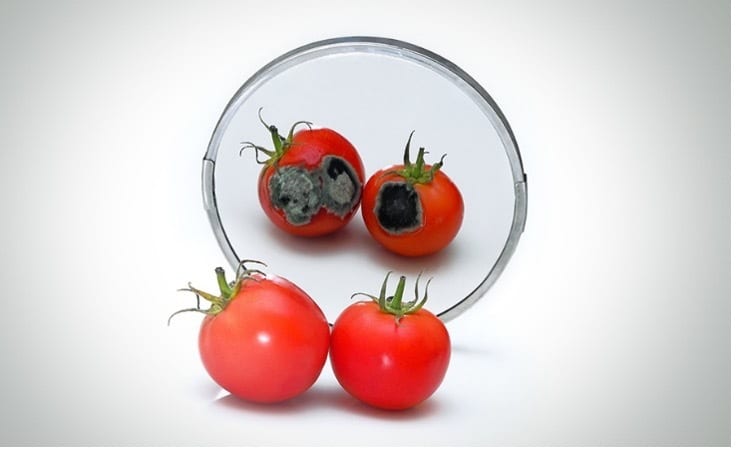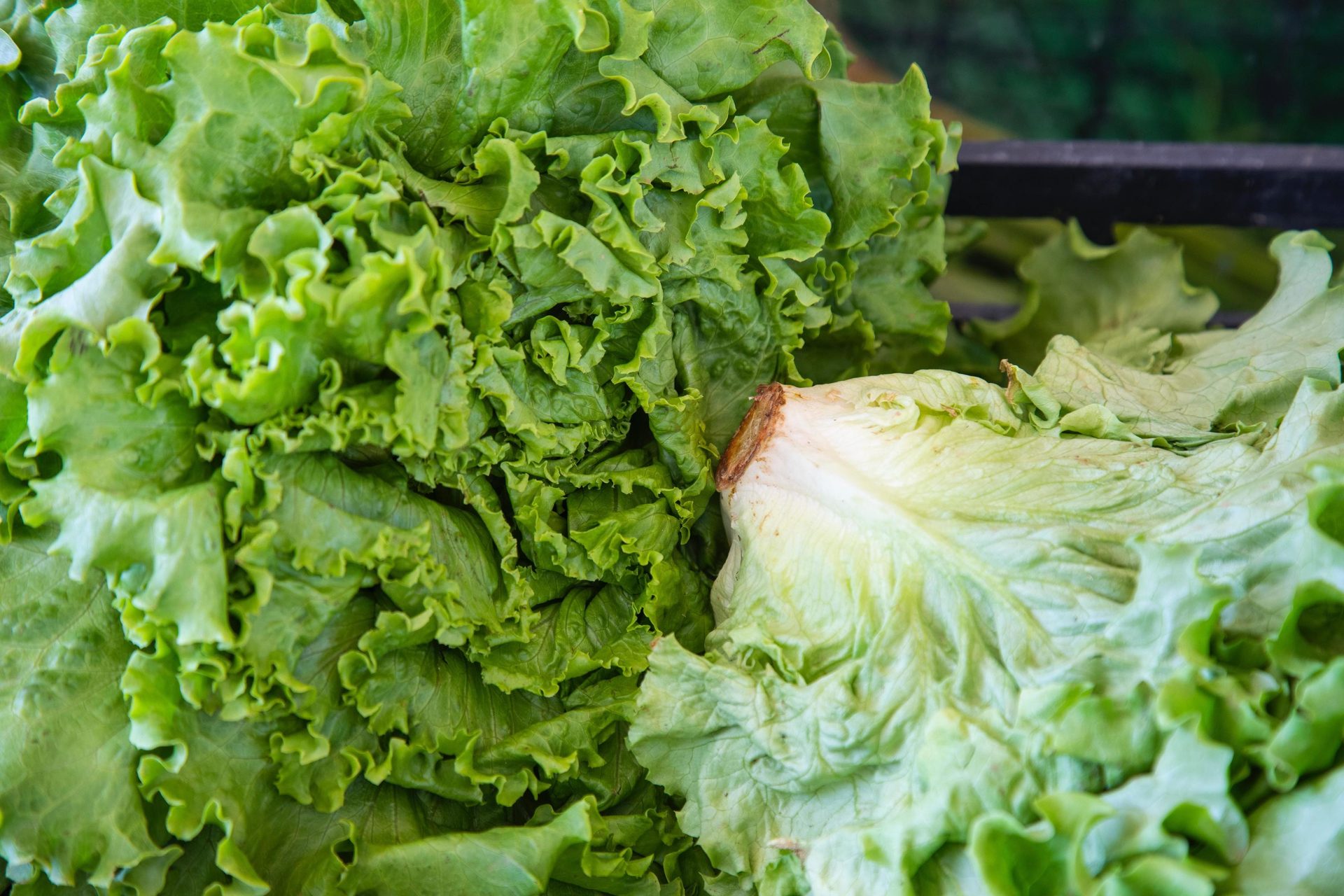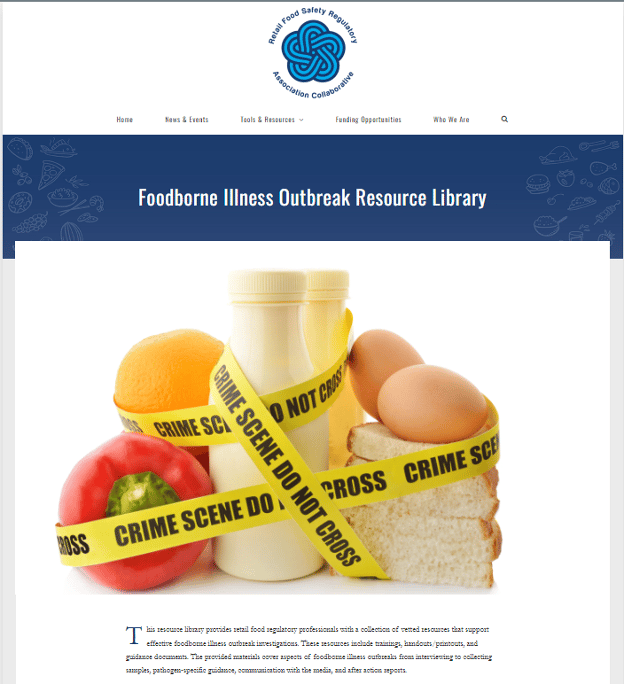
SCROLL
DOWN
USDA-FSIS Issues Proposed Regulatory Framework for Reducing Salmonella in Poultry
Image credit: Dr_Microbe/iStock / Getty Images Plus via Getty Images

The U.S. Department of Agriculture’s Food Safety and Inspection Service (USDA’s FSIS) is continuing its efforts to reduce incidences of Salmonella infections with the proposal of a new regulatory framework designed to reduce the prevalence of Salmonella contamination in poultry products. In addition to addressing cross-cutting issues of testing for Salmonella, the impact on small and very small establishments, and data sharing, three key components comprise the framework:
- Requiring that incoming flocks be tested for Salmonella before entering an establishment
- Enhancing establishment process control monitoring and FSIS verification
- Implementing an enforceable final product standard.
The first key component of the framework would require establishments to characterize Salmonella as a hazard that is reasonably likely to occur at receiving as part of their HACCP plans, and that incoming flocks be tested for Salmonella before entering an establishment. Establishments would need to demonstrate that their subsequent processes would be effective in reducing Salmonella so that products would meet the final product standard.
Secondly, to ensure that poultry slaughter establishments are effectively controlling Salmonella throughout their operations, FSIS may modify its current regulations to include enhanced establishment monitoring procedures, such as revised locations for multipoint sampling and the use of a statistical approach to process control.
Finally, FSIS is considering implementing a final product standard to ensure that product contaminated with Salmonella that is likely to cause illness is not sold to consumers. FSIS would make an enforceable final product standard possible by declaring Salmonella to be an adulterant, and would rely on criteria that were applied to Shiga toxin-producing Escherichia coli. These criteria are: consideration of serotypes associated with human illnesses, low infectious dose, severity of human illnesses, and typical consumer cooking practices.
Regarding testing for Salmonella, the agency may target Salmonella serotypes found in poultry that are most likely to cause human illness: Enteritidis, Typhimurium, and Infantis. Finally, in addition to the current requirement of establishments providing sampling data to FSIS in-plant personnel for review, FSIS may develop a process for establishments that are performing their own sampling and testing for Salmonella and indicator organisms at rehang and post-chill to regularly share their data with FSIS electronically.
FSIS will publish a proposed notice of determination to declare Salmonella as an adulterant in NRTE breaded and stuffed chicken products in 2022, and intends to publish additional proposed rules and policies implementing the strategy in 2023, with the goal of finalizing any rules by mid-2024.
The U.S. Food and Drug Administration (FDA) has announced two new food safety prevention strategies intended to help prevent outbreaks of foodborne salmonellosis and listeriosis associated with imported enoki and wood ear mushrooms, and salmonellosis associated with bulb onions. The strategies are part of FDA’s Foodborne Outbreak Response Improvement Plan under its New Era of Smarter Food Safety. FDA is also working with industry, state, international, and other partners on the development of several other food safety prevention strategies that will be released as they become available.
In 2020, FDA’s Coordinated Outbreak Response and Evaluation (CORE) Network, in collaboration with the Centers for Disease Control and Prevention (CDC) and state and local partners, investigated a multistate outbreak of Listeria monocytogenes infections linked to the consumption of enoki mushrooms imported from the Republic of Korea (ROK). The outbreak resulted in four deaths and 31 hospitalizations. In 2020 and 2021, Salmonella outbreaks associated with the consumption of bulb onions produced in the U.S. and Mexico caused more than 2,100 confirmed cases of foodborne illness in the U.S.
The prevention strategies examine commodity-hazard pairings, potential sources and routes of contamination, and what can be done to reduce future incidences of foodborne illness. The strategies also identify existing knowledge gaps and areas that require focus to inform, as well as promote research and engagement with external stakeholders for collaborations to protect public health and prevent future outbreaks. For a deep dive on FDA's commodity-specific prevention strategies for produce—including those that have already been released, and future strategies that are in development—listen to the Food Safety Matters podcast episode with Stephen Hughes, Prevention Coordinator within FDA's Center for Food Safety and Applied Nutrition (CFSAN), and Jennifer McEntire, Ph.D., Chief Food Safety and Regulatory Officer at the International Fresh Produce Association (IAFP).
All FDA prevention strategies can be viewed on the agency’s Food Safety Prevention Strategy webpage.

FDA Releases Prevention Strategies for Salmonellosis, Listeriosis from Mushrooms, Onions
FDA Releases New Food Fraud Webpage
The U.S. Food and Drug Administration (FDA) has released a new website on economically motivated adulteration (EMA), including food fraud. The purpose of the website is to keep businesses and consumers informed on the latest food fraud developments.
The website includes links on how to report food fraud; examples of food adulteration; how food fraud is detected and monitored; enforcement and legal consequences, such as recalls, seizures, and import refusals; guidance documents to assist manufacturers and importers; and a list of import alerts.
EMA occurs when "someone intentionally leaves out, takes out, or substitutes a valuable ingredient or part of a food," according to FDA. EMA also occurs when a substance is added to a food to make it appear better or of greater value.
Food fraud is a common type of EMA that FDA investigates, but EMA also occurs with other products, including animal food and cosmetics. Some types of EMA are also misbranding violations. Estimating how frequently food fraud occurs or its exact economic impact can be challenging because food fraud is designed to avoid detection. Outside estimates by experts have found that food fraud affects 1 percent of the global food industry at a cost of approximately $10–$15 billion per year, although more recent expert estimates peg the cost as high as $40 billion per year.
Food fraud can also lead to major health issues and even death. Some examples include lead poisoning from adulterated spices and allergic reactions to a hidden or substituted ingredient that contains a small amount of just one food allergen.
Click here to visit FDA’s new EMA website.

Image credit: Dr_Microbe/iStock / Getty Images Plus via Getty Images
The U.S. Food and Drug Administration (FDA) has concluded its internal review of the agency’s response to the U.S. infant formula supply crisis, precipitated by a food safety incident involving Abbott Nutrition, a major formula supplier that issued a significant recall of Cronobacter sakazakii-contaminated product and halted production at its Sturgis, Michigan facility for several months. The report details key findings and recommendations that will allow the agency to respond more quickly during a public health emergency.
The report is the result of information collected from over 40 interviews with more than 60 FDA staff members and leaders who were directly involved with the events that transpired during the infant formula crisis. The report highlights five major areas where improvements are needed, for which specific recommendations are provided:
- Modern information technology that allows for the access and exchange of data in real time to all responsible stakeholders
- Sufficient staffing, training, equipment, and regulatory authorities to fulfill FDA’s duties
- Updated emergency response systems that are capable of handling multiple public health emergencies occurring simultaneously
- Increased scientific understanding about Cronobacter, its prevalence and natural habitat, and how new knowledge may translate into appropriate control measures and oversight
- Assessment of the infant formula industry, its preventive controls, food safety culture, and preparedness to respond to events.
Although the recall and halted production of formula produced by Abbott Nutrition’s Sturgis facility was a large contributor to the infant formula supply crisis, interviews conducted for the report have revealed that no single action can explain the events that occurred. Instead, the report identifies a confluence of systemic vulnerabilities that demonstrate the need for continued modernization and investment in the expertise and tools that are required to adequately anticipate and address public health challenges.

FDA Releases Review of Response to Infant Formula Supply Crisis, Addresses Improvements
In mid-October, the World Health Organization (WHO) launched its Global Strategy for Food Safety 2022–2030, which was adopted in June. The strategy will guide and support WHO Member States in their efforts to prioritize, plan, implement, monitor, and regularly evaluate actions toward mitigating foodborne illnesses by strengthening food safety systems and promoting global cooperation.
The strategy addresses current and emerging food safety challenges, takes into consideration new technologies, and includes innovative approaches for bolstering food safety systems. Outlined in the strategy are specific targets for reducing the global burden of foodborne illnesses, with the ultimate goal being a 40 percent decrease in cases of foodborne diarrheal diseases that disproportionately affect children under five years old and other vulnerable populations. The strategy also aims for 100 percent of functional coordination mechanisms to manage foodborne illness outbreaks and enhanced laboratory capacity for foodborne illness surveillance.

WHO Launches Global Strategy for Food Safety 2022–2030
The U.S. Centers for Disease Control and Prevention (CDC) published a webpage that summarizes the outcomes of CDC’s investigations of possible multistate outbreaks caused by Salmonella, Shiga toxin-producing Escherichia coli (STEC), and Listeria monocytogenes in 2017–2020.
The analysis includes 470 possible multistate outbreak investigations, 53 percent of which were confirmed to be multistate. The foodborne illness outbreaks identified in the CDC summary were associated with 7,659 illnesses, 2,044 hospitalizations, and 41 deaths. Among the foodborne illnesses related to solved multistate outbreaks, 9 percent occurred in children under five years of age, and 20 percent occurred among adults over 65 years of age.
Salmonella caused the most multistate foodborne illness outbreaks at 64 percent, followed by STEC at 22 percent and L. monocytogenes at 14 percent. Furthermore, Salmonella outbreaks tended to be larger than those caused by STEC or L. monocytogenes. However, L. monocytogenes illnesses were found to be more severe than those caused by Salmonella or STEC, with 94 percent and 16 percent of foodborne listeriosis cases resulting in hospitalization or fatality, respectively.
Specific food groups were commonly found to be the source of multistate foodborne illness outbreaks. Fruits topped the list, associated with 22 solved outbreaks, with papayas and melons identified as the cause of six outbreaks each. Vegetable row crops were the second most-common source, causing 20 outbreaks, seven of which were linked to romaine lettuce. Additionally, onions were identified as the vehicle for three foodborne illness outbreaks, sickening 1,400 people; as a result, root/underground vegetables caused the most outbreak-associated illnesses of any food category. At least one multistate foodborne illness outbreak linked to beef, chicken, dairy, fruits, and vegetable row crops occurred every year during 2017–2020.

CDC Summarizes Multistate Foodborne Illness Outbreaks 2017–2020
The U.S. Food and Drug Administration (FDA) has asked the National Academies of Sciences, Engineering, and Medicine (NASEM) to conduct an independent study to assess young children’s exposure to mercury from consuming seafood. The study supports the goals of FDA’s Closer to Zero Action Plan for reducing babies’ and young children’s exposure to toxic heavy metals from foods. It will also help inform whether updates are needed for the agency’s current advice about eating fish for children and for people who are or might become pregnant or are breastfeeding.
While seafood carries certain healthful benefits for children and mothers, it is also the primary dietary source of mercury, which is spread throughout the environment by both natural and human-made processes. Mercury can damage the nervous system, and babies and young children are more vulnerable to the harmful health effects of the toxic metal. Seafood can also be a source of exposure for other naturally occurring and human-made contaminants.

FDA Study Will Evaluate Children’s Exposure to Mercury from Seafood
Ian Pearson, Global Quality Assurance Manager for the Unilever Quality Expertise Group, has joined the Editorial Advisory Board of Food Safety Magazine. At Unilever, he facilitates the delivery of expertise knowledge in microbiology, allergen management, cleaning and disinfection, hygienic design, foreign material control, and other standards. He is also a Global Product Incident Manager, helping categorize, coordinate, and escalate any product incidents in the marketplace and liaise with the Unilever Safety and Environmental Assurance Center for independent expert risk assessments.
He is also involved in the creation and roll-out of a standard tool for a harmonized, risk-based sampling system for all raw materials, and recently completed a risk tool for economically motivated adulteration. He trains for and evaluates HACCP plans, as well as trains Preventative Control Qualified Individuals to enable facilities to fulfil the legal requirements for FSMA.
Previously, he served as the Ready-to-Drink Global Quality Assurance Manager for Lipton Ice Tea, as well as the Supply Chain Technical Contact Manager in the European Supply Chain for Lipton. Prior to his roles at Lipton, he was Quality Control Manager for Veetee Rice Ltd., Senior Microbiologist for Spillers Petfoods, and Microbiologist/Chemist for John Rannoch Ltd. He has also served in various research positions at universities.

Pearson Joins FSM Editorial Advisory Board

The National Association of State Departments of Agriculture (NASDA) has elected Wyoming Director of Agriculture Doug Miyamoto as NASDA's 2022–2023 President.
The Consumer Brands Association has chosen David Chavern to succeed Geoff Freeman as the new CEO in January 2023.
IFT has promoted Bryan Hitchcock to Chief Science and Technology Officer.
Yuengling's Ice Cream has appointed Charles Green to be the new President and CEO, and a Director. Robert C. Bohorad will assume the role of Chief Financial Officer and Chief Operating Officer.
The American Butter Institute (ABI) has elected Catherine Fox of Land O'Lakes as ABI's new president.
International Sanitary Supply Association (ISSA), the worldwide cleaning industry association, has named Tom Friedl, the President and CEO of the Tranzonic Companies, as Executive Officer of ISSA.
Packaging solutions provider Selig Group has appointed David Griffin as Vice President of Global Sales and Marketing.
Church Brothers Farms has appointed Gurjit Shergill as Vice President of Food Safety, Quality, and Regulatory Compliance.
Sokol Custom Food Ingredients has named Shawn M. Sullivan as CEO.
CuliNEX, a clean-label food product and plant-based formulation consultancy, has appointed Abla Jad as Chief Financial Officer.
QualiTru Sampling Systems has hired Scott Larson as Vice President of Operations and Supply Chain.
Sabert, a manufacturer of food packaging solutions, has hired Rebecca Locker, Ph.D. as Sustainability Director.
Hoffmann, a global provider of packaging for infant food, nutritional, and wellbeing products, has named industry veteran Christoph Peternell as Managing Director for its Tins Business.
The Pet Food Institute (PFI) has named Dana Waters as its Policy Analyst.
Mark Munger has joined Ocean Mist Farms as Senior Director of Marketing.
Bunting, a designer and manufacturer of magnetic separators and magnetic equipment, has appointed Robert Bunting as President and CEO.

MIYAMOTO

FOX

FRIEDL

SHERGILL

SULLIVAN

JAD
Fresh Del Monte, Decapolis Provide Food Traceability Solution
Fresh Del Monte Produce has invested a 39 percent stake in Decapolis, a provider of traceability technology to support food safety. The two companies plan to roll out Decapolis Food Guard™ (DFG), a blockchain-based traceability solution, across all Fresh Del Monte business segments, starting with Fresh Del Monte’s pineapple operations in Costa Rica. DFG provides full traceability solutions through its chain of records that capture assessments at each stage of production—from planting to distribution—through the use of QR codes. Employing blockchain technology ensures that data remains immutable, and the use of QR codes on product labels certifies end-to-end traceability.

Eagle Protect has announced the final results of a multi-year microbial analysis of potential pathogenic glove contamination. The tests confirmed human fecal indicators on 50 percent of new and unused gloves, as well as foodborne pathogens and other microbes such as Bacillus cereus, Bacillus anthracis, Listeria monocytogenes, Clostridioides difficile, Staphylococcus aureus, Pseudomonas aeruginosa, and Streptococcus pneumoniae.
In total, 2,800 new and unused U.S. glove imports from 26 different brands were independently tested. The analysis identified over 250 different viable microbial species on both the interior and exterior glove surfaces. According to Eagle Protect, disposable gloves are not required to be clean or intact under FDA’s current food compliance standards, which reference only chemical content and migration standards. Additionally, few inspection procedures are required for gloves imported to the U.S.

FoodChain ID recently integrated the entirety of its product portfolio under the trusted FoodChain ID brand to provide customers with a single point of contact for data, insights, and industry services. FoodChain ID has unified its collective intelligence of credible data and expertise covering a wide range of functions and capabilities, including product development, food safety, regulatory compliance, product certifications, and testing. In other company developments, FoodChain ID Group also recently acquired Cosmocert S.A., an organic certification and inspection company in Greece that provides internationally and regionally recognized certification standards.
FoodChain ID Consolidates Products under Single Brand

Varcode, NPG Develop Smart Packaging Solutions for Temperature-Sensitive Products
Varcode has finalized a strategic partnership agreement with National Packaging Group (NPG) to develop, manufacture, market, and distribute technologically advanced, smart packaging solutions for distributing temperature-sensitive products. Under the agreement, NPG will integrate Varcode’s patented Smart Tag™ technology into its manufacturing businesses, creating a single source for digitally enabled packaging solutions that are capable of improving cold chain food transportation. NPG and Varcode will begin their partnership with the development and launch of two new product categories: Corrugated Smart Cases for wholesale products that are stored and transported in temperature-controlled environments, including perishable food products; and Smart Packaging Kits for online groceries and meal kits, delivered directly to consumers or point-of-care facilities in packaging conditions that require insulation and coolant within the corrugated packaging.


Study Finds Pathogens on 50 Percent of Food-Safe Gloves
ONLINE & OF NOTE
The Retail Food Safety Regulatory Association Collaborative (RFSRAC) has compiled a resource library for retail food regulatory professionals to support effective foodborne illness outbreak investigations. The resources include trainings, printable materials, and guidance documents that cover multiple areas of foodborne illness outbreak investigating, such as interviewing, sampling, pathogen-specific information, public communications, and after-action reports. The development of the resource library was informed by the results of an assessment conducted in 2021 by the National Environmental Health Association (NEHA) and RFSRAC partners. The resource library webpage also features a submission form for additional resources to be uploaded for consideration.
Resource Library for Retail Food Regulators Conducting Outbreak Investigations

